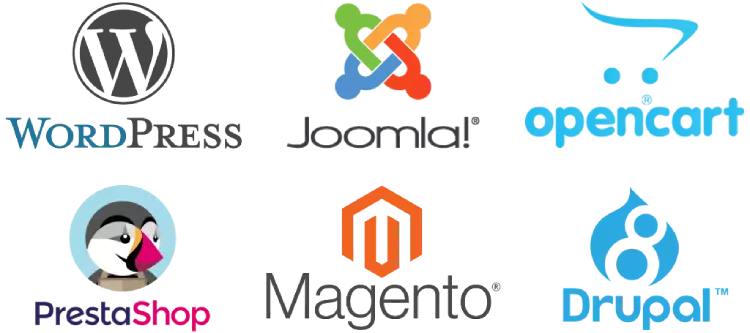FRAMEWORK OR CMS.
Having an idea to create a website or a web application, customers have a completely logical question: “What should we take as a basis for implementation – a framework or a CMS”.
Well, let’s figure out what should be taken as a basis when creating sites of various types – a framework or CMS, what is the difference between them, as well as the pros and cons of approaches.
So let’s start with the Content Management System. The name speaks for itself. CMS is a system for managing content, website content. There are quite a lot of CMS:
- WordPress;
- Magento
- Joomla
- Drupal
- opencart;
- Shopify etc

As a rule, CMS are used when creating a site of a certain type. So WordPress is a system that was originally conceived for creating blogs and business card sites. As ecommerce became popular, WordPress received a specialized module – WooCommerce, using which you can create full-fledged online stores. Magento, OpenCart and Shopify were originally conceived to create online stores. Content management systems have a graphical interface that allows you to create websites without programming. So, having installed CMS, you immediately get a ready site, with all the necessary structure, visual part and control panel. If you need to change the look, you can always choose from ready-made templates.
If the owner of the site on the CMS lacks basic functionality, he can expand it by installing the necessary modules – plugins. Plugins allow you to organize search on your site, set up SEO optimization, organize import / export of commodity items, as well as many other options. The presence of an administration panel allows you to manage a ready-made resource.
TO SUMMARIZE – THE ADVANTAGES OF USING CMS:
- Quick installation of the project;
- Easy setup that does not require programming knowledge;
- Possibility of expanding the functionality – installing plugins;
AND HERE IS WHERE THE CONS OF CMS CREPT IN.
First of all, it should be noted that CMS are universal solutions, which leads to an overabundance of unnecessary functionality, and hence a large volume of the system. Together with the CMS, you get a large number of functions you do not need, which further affects the speed of the system. And the subsequent additional installation of modules only exacerbates the situation. With large amounts of data loaded into the CMS, its performance noticeably deteriorates.
Also, most CMS are tailored for specific tasks, and if those are not enough, you need to install additional modules. It should be noted that modules are divided into three types:
- Free;
- Conditionally free;
- Paid.
Most of the modules belong to the so-called Shareware category. This means that the user receives only a reduced part of the functionality for free. In order to get access to all the functionality you need to pay.
What to do if the functionality of your future web application goes far beyond the functionality that a standard CMS solution offers? You can try to search for suitable modules and install them from the administration panel. But you may encounter the problem that some of them are simply not compatible with each other. Yes, and customizing modules completely to the needs of the client is far from always realistic. That’s when you can not avoid contacting programmers who specialize in your chosen CMS. During the development process, programmers may encounter application functionality that is contrary to customization, and then the customization process can take a lot of time and money.
TO SUMMARIZE – THE CONS OF CMS:
- Large volume;
- Low operating speed;
- Difficulty of customization. specific customer requests.
Therefore, if a web application with non-standard functionality is initially foreseen, it is better to initially develop it on a framework. This will be discussed in the next part of the article.

